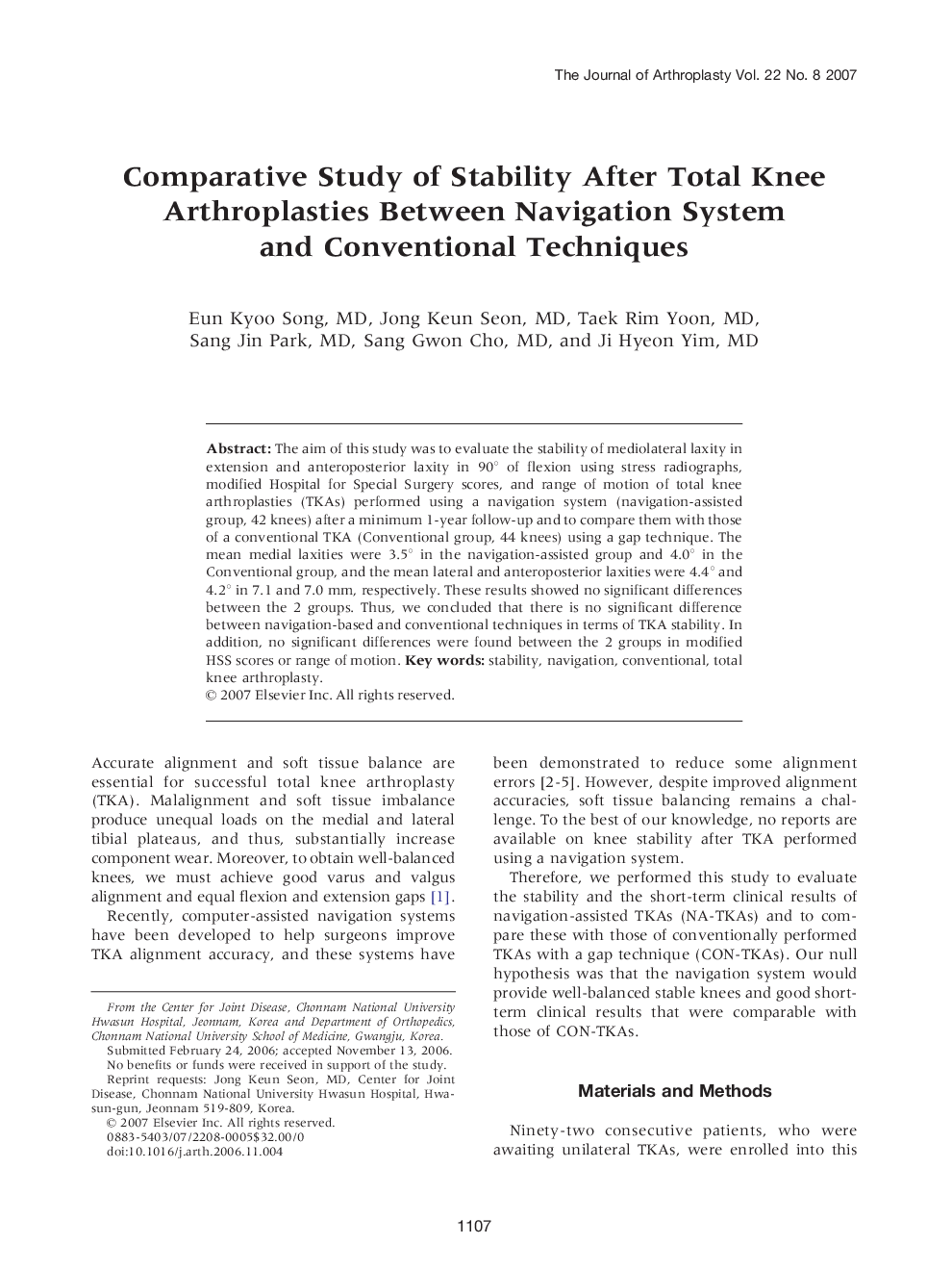| Article ID | Journal | Published Year | Pages | File Type |
|---|---|---|---|---|
| 4062034 | The Journal of Arthroplasty | 2007 | 5 Pages |
The aim of this study was to evaluate the stability of mediolateral laxity in extension and anteroposterior laxity in 90° of flexion using stress radiographs, modified Hospital for Special Surgery scores, and range of motion of total knee arthroplasties (TKAs) performed using a navigation system (navigation-assisted group, 42 knees) after a minimum 1-year follow-up and to compare them with those of a conventional TKA (conventional group, 44 knees) using a gap technique. The mean medial laxities were 3.5° in the navigation-assisted group and 4.0° in the conventional group, and the mean lateral and anteroposterior laxities were 4.4° and 4.2° in 7.1 and 7.0 mm, respectively. These results showed no significant differences between the 2 groups. Thus, we concluded that there is no significant difference between navigation-based and conventional techniques in terms of TKA stability. In addition, no significant differences were found between the 2 groups in modified HSS scores or range of motion.
